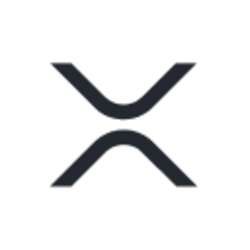XRP Ledger security received a low 41/100 score in Kaiko’s ranking, but XRP Ledger developers argue the score misinterprets a supply-chain incident and understates the network’s 13-year operational record, consensus resilience, and third-party audits.
-
Kaiko rated XRP Ledger lowest on security among 15 blockchains
-
Score influenced by an April supply-chain compromise and measures of decentralization
-
Developers cite 13 years without core-network incidents and audits from CertiK, Halborn, and FYEO
XRP Ledger security score controversy: read concise analysis and next steps for validators and developers — learn how XRPL responded.
What is the XRP Ledger security score from Kaiko?
XRP Ledger security score refers to Kaiko’s numeric assessment of network security and resilience. Kaiko assigned XRPL a 41/100 on August 13, ranking it last among 15 evaluated blockchains, a result driven by decentralization metrics and a supply-chain incident affecting an SDK.
Why did Kaiko rate XRP Ledger low in security?
Kaiko combined publicly available metrics for operational resilience, validator decentralization, audit frequency, and past incidents. The low score reflected a relatively low node count, a modest Nakamoto coefficient, and the April discovery of malware in an official SDK package.
| Network | Security score | Notes |
|---|---|---|
| Ethereum | 83 | High validator count, frequent audits |
| Arbitrum | ~80 | Layer-2 resilience |
| Solana | High | Large validator set (>1,000) |
| XRP Ledger | 41 | Low node count, SDK supply-chain issue |
How secure is the XRP Ledger in practice?
XRP Ledger security in practice combines consensus design, validator governance, and operational safeguards. XRPL proponents point to 13 years of continuous operation without a core-network breach and the protocol’s Unique Node List model that limits the impact of malicious validators.
What was the April supply-chain incident and did it affect the network?
In April, a compromised NPM package used by developers introduced a potential crypto-stealing backdoor in the SDK downloads. The XRPL Foundation replaced the compromised artifacts and confirmed the network codebase and core ledger were not impacted. Security firm Aikido, and later Web3 security firms, observed and reported the issue.
How does decentralization affect XRPL’s security rating?
Decentralization metrics used by Kaiko include node count and the Nakamoto coefficient. XRPL runs fewer than 200 mainnet validators, which lowers its decentralization score compared with networks like Solana. Critics view this as a proxy for attack surface; XRPL developers emphasize consensus rules and community governance that mitigate collusion risk.
What endorsements and audits support XRPL’s security?
XRPL has received security validation from third parties listed as CertiK (Triple A Skynet score), and audits by Halborn and FYEO are reported by XRPL representatives. These endorsements form part of the network’s trust signals alongside operational history and incident response transparency.
Frequently Asked Questions
How many validators does XRP Ledger run on mainnet?
XRPL runs fewer than 200 mainnet validator nodes, a figure cited in public data and used by Kaiko to assess decentralization relative to networks like Solana with more than 1,000 validators.
What role did security firms play in the April SDK incident?
Security firms such as Aikido identified the compromised package. XRPL project teams and independent auditors coordinated to replace downloads and inform the developer community, demonstrating incident transparency.
Key Takeaways
- Kaiko score: XRPL received a 41/100 driven by decentralization metrics and a supply-chain compromise.
- Operational record: XRPL defenders cite 13 years without a core-network incident and multiple third-party audits.
- Next steps: Increasing validator diversity and supply-chain defenses can reduce future security concerns.
Conclusion
The debate over XRP Ledger security highlights differences between metric-driven rankings and operational context. Kaiko’s 41/100 spotlights decentralization and supply-chain risk, while XRPL developers emphasize long-term resilience and independent audits. Continued transparency, validator growth, and supply-chain hardening will shape XRPL’s security narrative going forward.
Published: 2025-08-21 · Updated: 2025-08-21 · Author: COINOTAG
